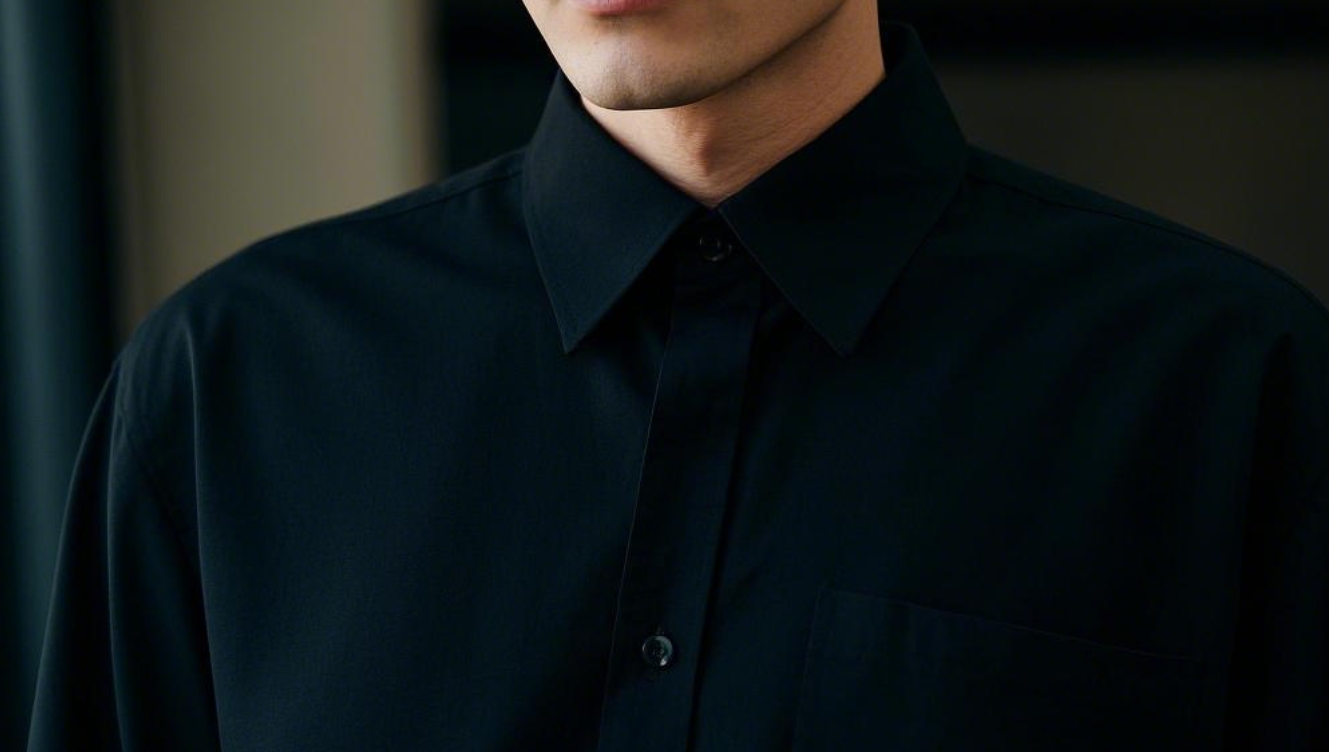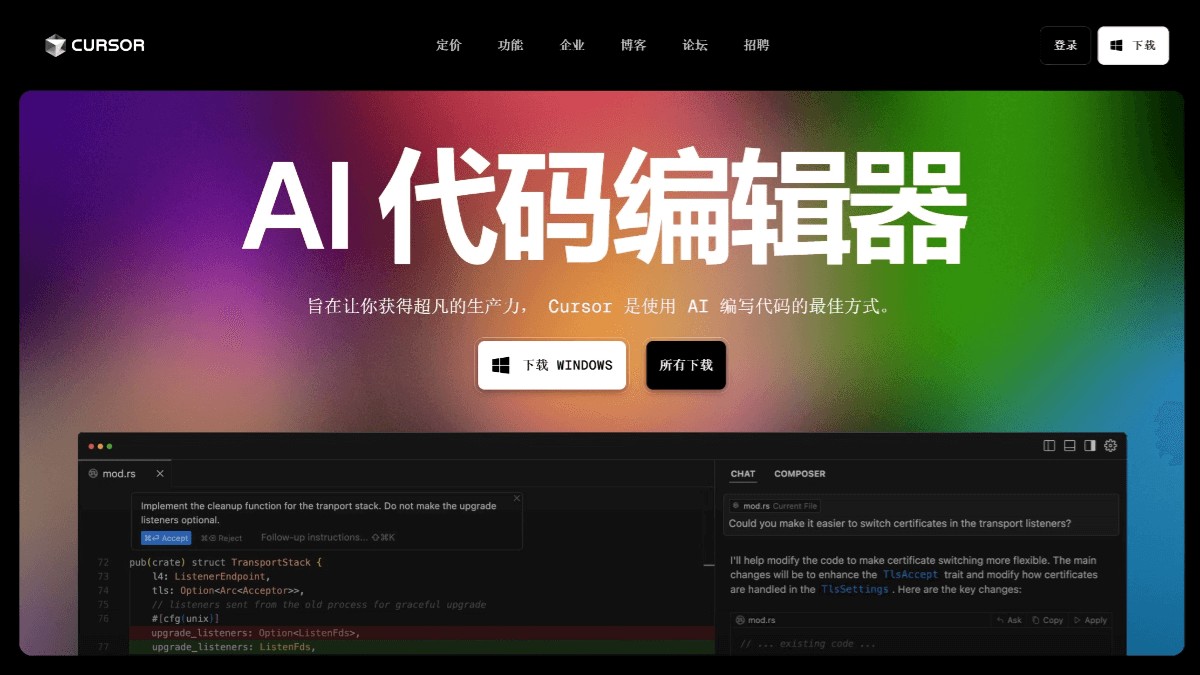
In the past, creating realistic clothing images required professional photographers, models and post-production teams. Now, with the help of AI image generation technology, we can quickly generate black shirt images of various styles with simple text descriptions, greatly reducing costs and time.
To generate an AI model with a black shirt style, you need to combine several steps to create an image, video, or design with that style. This process usually includes the following steps:
1. Define style characteristics:
Before you start generating images, it's crucial to clearly define the style you want for your black shirt. You need to consider the following aspects:
Color: In addition to pure black, you can also consider dark gray, charcoal black, etc., as well as matching with other colors, such as white buttons, gray stripes, etc.
shape:
Formal shirts: usually made of crisp fabrics such as poplin or oxford, suitable for business occasions.
Casual shirts: You can choose soft fabrics, such as linen, cotton and linen, and more diverse styles, such as short-sleeved, henley shirts, etc.
T-shirt: Simple and comfortable, suitable for daily wear, it can have different neckline designs such as round neck and V-neck.
POLO shirt: Between a T-shirt and a shirt, it is both casual and slightly formal.
Fabric: Different fabrics will bring different textures and visual effects. For example, silk is shiny and smooth, cotton is comfortable and breathable, and leather looks tough and stylish.
Tailoring: Different cuts such as slim fit, loose fit, and fitted will affect the overall silhouette of the garment.
Pairings: Consider pairing your black shirt with other items of clothing, such as suits, jeans, skirts, etc.
Design style:
Simple and modern: focus on lines and tailoring without excessive decoration.
Retro: You can refer to clothing styles and design elements from the past.
Street: Emphasize individuality and trend, and can add elements such as prints and slogans.
Gothic: Usually dark colors and dark elements.
Target audience: men, women, children, gender neutral, etc.
Scene: formal occasions, casual occasions, indoor, outdoor, etc.
Example:
"A slim-fitting black silk shirt paired with black trousers is perfect for a formal dinner party with dim lighting and an elegant atmosphere."
"A loose-fitting black cotton T-shirt with a white band logo printed on the front, suitable for casual everyday wear with a city street in the background."
2. Choose the right AI tool:
Text to image generation:
Midjourney: Known for its unique art style and powerful image generation capabilities.
DALL-E 2 (OpenAI): Generates realistic and diverse images with greater attention to detail and realism.
Stable Diffusion: Open source and highly customizable, users can adjust it to their needs.
Adobe Firefly: Integrated in Adobe Creative Cloud, it is easy to integrate with other design tools and is suitable for professional designers.
Clothing design software:
CLO3D: Professional clothing design software that can simulate the physical properties of clothing, such as wrinkles, drape, etc., and is suitable for making 3D clothing models.
Marvelous Designer: focuses on realistic simulation of clothing and can create highly realistic clothing animations.
Image editing and style transfer:
Photoshop (Adobe Sensei): Leverage AI features for image editing and enhancement, such as content-aware filling, image repair, and more.
DeepArt, Prisma, Artbreeder: Apply artistic styles to photos and convert photos into paintings, sketches, and other styles.
3. Use text-to-image generation tools (key points):
Choose a tool: Choose the right tool based on your needs and preferences.
Writing Prompts: This is key to generating high-quality images. To write prompts that are clear, specific, and descriptive, use these tips:
Some more detailed example prompt words:
“A man wearing a black linen shirt, standing on a beach at sunset, cinematic lighting, highly detailed, 8k, photorealistic.”
“A close-up photo of a black leather shirt with silver buttons, highly detailed texture, dark background, studio lighting, hyperrealistic.”
“A woman in a black turtleneck sweater, minimalist style, soft studio lighting, portrait photography, elegant, sophisticated.”
“A black and white photo of a punk rocker wearing a ripped black t-shirt with a band logo, grainy texture, street photography, gritty.”
Describe the subject: e.g. "black shirt".
Add details: including style, fabric, cut, color details, pattern, button type, etc. For example, "Slim-fitting black silk shirt, long sleeves, French cuffs, black buttons."
Describe the environment/context: e.g. "in a studio setting", "on a city street", "in natural light".
Add an artistic/photographic style: e.g. "photography", "hyper-realistic", "painting", "conceptual art", "fashion photography", "close-up".
Use parameters (tools like Midjourney): e.g. --ar 3:2 to set the aspect ratio, --style raw for a more raw output, --zoom 2 to enlarge the image.
Generate image: Enter the prompt word into the tool and generate an image.
Iteration and optimization: Modify the prompt words based on the generated results, and continue to try and adjust until you obtain satisfactory results. Many tools allow the generated images to be enlarged, morphed, regenerated, etc., making it easier for users to iterate.
4. Adjust details and style (optional):
Use image editing software (such as Photoshop, GIMP) to post-process the generated image, adjust color, light and shadow, contrast, sharpness, etc., and add or modify details to make it more suitable for your needs.
5. Export and application:
Export the final image and use it for various purposes such as websites, e-commerce platforms, social media, advertising, design projects, presentations and more.
Through the above steps, you can effectively use AI to generate black shirt images in various styles. Remember, clearly defining style characteristics and writing effective prompts are key to getting the best results. By constantly trying and iterating, you will discover the power of AI image generation technology.



